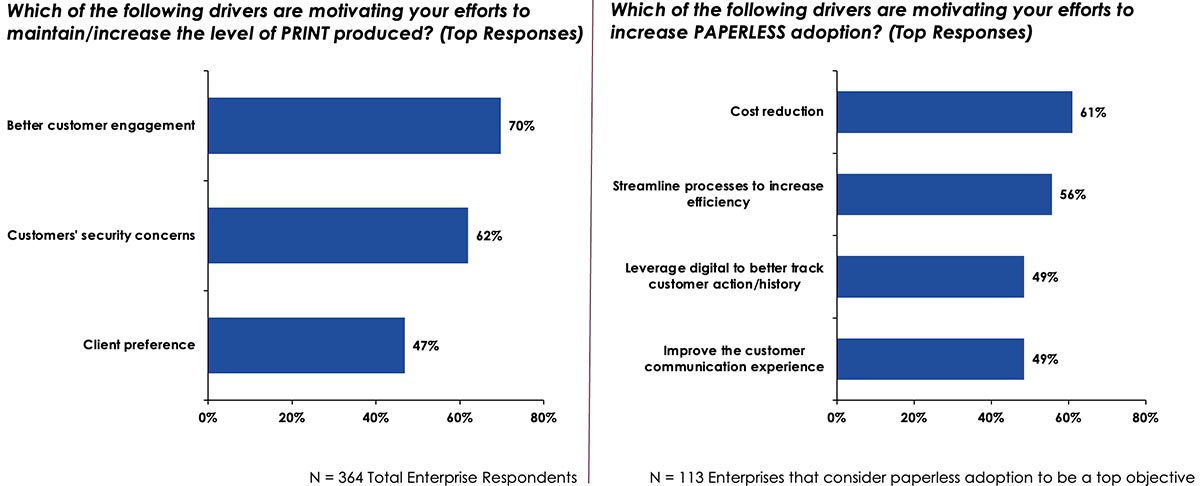- Today’s enterprises must strike a balance between moving their customers up the paperless adoption curve while also acknowledging that some of their customers might maintain a preference for paper.
- To ensure a positive experience, the customer must be at the center of all communication transformation initiatives.
- Consumers want to engage with providers on their own terms (based on convenience or comfort level) and receive a consistently excellent experience across all communication channels.
By Eve Padula
Introduction
It is now more important than ever for providers of transactional communications to deliver the positive experience that their customers have come to expect. Rather than attempting to migrate all customers from printed to digital communications as quickly as possible, the goal should be to deliver a transformative customer experience that will build relationships, increase loyalty, and ultimately drive revenues. Keypoint Intelligence’s newly released transactional communications survey data confirms that a positive customer experience can be a compelling competitive differentiator in today’s market.
Electronic vs. Paper Communications
One component of a positive customer experience is delivering the right mix of electronic and paper-based transactional communications. Unfortunately, enterprises’ desires to cut costs may be at odds with consumers’ personal preferences about how they want to be communicated with. A s a result, today’s enterprises must strike a balance between moving their customers up the paperless adoption curve while also acknowledging that some of their customers might maintain a preference for paper.
Keypoint Intelligence recently completed a web-based survey of over 350 business respondents in North America (US and Canada). Whereas the primary drivers for maintaining or increasing paper-based transactional communications centered upon improving the customer experience and honoring client preferences, drivers for increasing paperless adoption were more focused on cutting costs and improving efficiency.
Figure 1. Electronic vs. Paper – The Drivers

Source: Annual State of Transactional Communications Business Survey (North America); Keypoint Intelligence 2021
Many firms might initially view increased paperless adoption as a means of reducing costs—and it certainly can be. To ensure a positive experience, though, the customer must be at the center of all communication transformation initiatives. The focus must shift from cost reduction to the customer’s overall journey.
A Positive Customer Experience is Key
Of our total respondent pool, 161 enterprises—roughly 44% of the total—considered improving the customer experience to be among their most important business objectives. Of these enterprises, the most common tactics for improving the customer experience included:
- Expanding the mobile offering
- Improving data hygiene/address validation
- Better interacting with customers via social media
The Bottom Line
Even in today’s increasingly digital world, customers don’t necessarily want all of their interactions with their transactional communications providers to be digital. Instead, they want to engage with providers on their own terms (based on convenience or comfort level) and receive a consistently excellent experience across all communication channels. Some customers will welcome a highly digital experience, but others might be confused by it. Seeking ways to cut costs is always important, but remember—a paperless adoption strategy won’t lower your costs if calls to customer service go up or additional correspondence must be sent to frustrated customers.
If you are interested in a more in-depth analysis of the findings from this year’s Transactional Communications Business Survey from Keypoint Intelligence, please e-mail [email protected] for more information.
Eve Padula is a Senior Consulting Editor for Keypoint Intelligence’s Production Services with a focus on Business Development Strategies, Customer Communications, and Wide Format. She is responsible for creating many types of content, including forecasts, industry analyses, and research/multi-client studies. She also manages the writing, editing, and distribution cycles for many types of deliverables.















Discussion
Join the discussion Sign In or Become a Member, doing so is simple and free